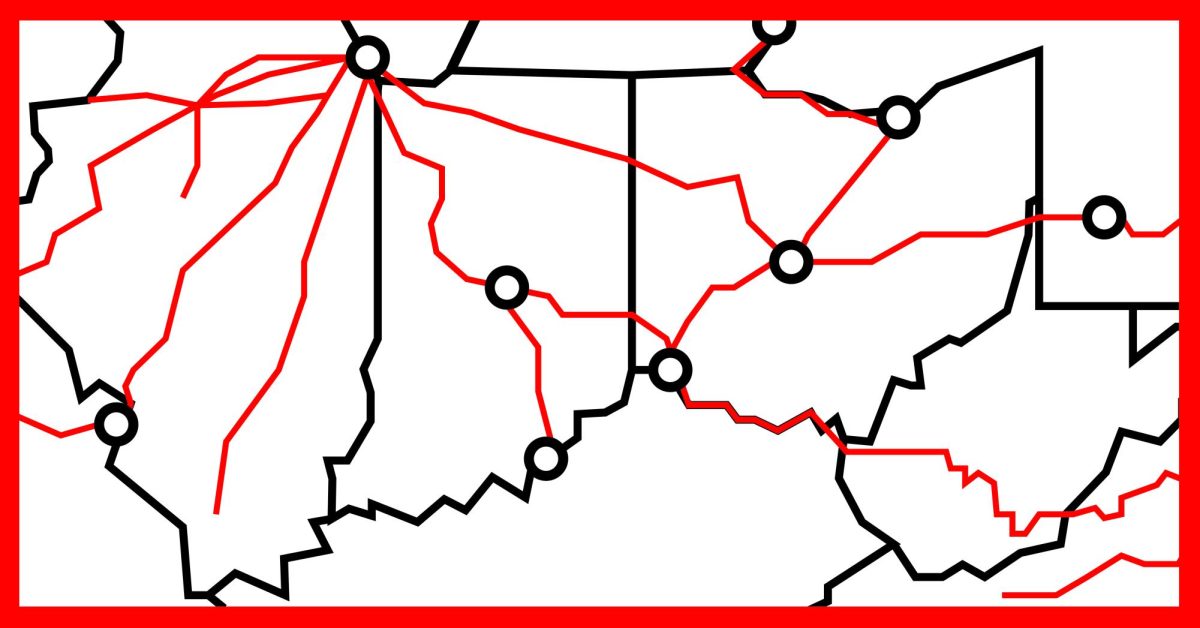The opinions expressed here are the views of the writer and do not necessarily reflect the views and opinions of the students, administration, staff, or faculty of duPont Manual High School.
This editorial was submitted by Emily McConville (10), special contributor to RedEye.
Everybody is wondering why some schools score worse than others. Why schools are not improving like they should. Why, despite our best efforts, schools cannot meet the standards of proficiency we set out for them. It’s the teachers, one says. They’re not qualified enough. It’s the extracurriculars, says another. Students must do after-school activities. It’s poverty, says a third. A high percentage of students in poverty makes it difficult for a school to reach its standards.
Or, say many others, it’s the standards themselves.
In the 2004-2005 school year, Valley High Schools’ CATS scores were, by the standard set for them, not good. Their goal was 71.9, according to JCPS school report cards, but their score was only 62.3. The next year, the score fell by almost four points. But the year after that, scores rose to 62.8, half a point more than they had been formerly. Despite these regains, Valley was still placed on Assistance Level 3, because it did not meet its next goal of 78.8. In the eyes of the law, it was a failing school.
Such is the problem with the standards set forth in JCPS. A school is given a goal, and, whether it reaches it or not, the goal rises every year. It leaves “failing” schools farther and farther behind as it rises eight or ten points at a time, even if the schools improve their test scores. It can hurt morale, ruin reputation, and even cause reshuffling of faculty – all for a standard that schools can never meet. JCPS Deputy Superintendent Joe Burkes agrees. In a press conference with duPont Manual High School students, he said, “Over a period of time, if the bar keeps moving up – well, that’s like saying, let’s all line up in California and swim to Hawaii. Some will go a lot further than others, but eventually, everybody will fail.”
So what is the solution?
There ought to be a single, bright-line standard for schools in JCPS to reach – a standard that stays the same for each school and stays put. But it should be more than that. Congress should enact a law that sets a single, national standard, on a single, national test (such as the National Assessment for Educational Progress) for all schools to reach. Schools should be rewarded for meeting or getting closer to this one goal. The goal itself – the level of proficiency schools should reach – should reflect what students need in order to function and be successful in life after school. This proposal has two clear benefits.
Realistic goals – a single standard can be made to fit the majority of US schools. Each school can continue working towards that standard, and be rewarded for meeting or getting closer to it, instead of being sanctioned for scores that improve but do not meet the rising standard. This allows schools to work towards a goal that is not increasingly difficult to achieve (with JCPS schools 10 or 20 percent behind their predetermined goals, can we really expect them to achieve 100 percent proficiency by 2014?).
Single level of proficiency – currently, the No Child Left Behind Act allows each state to set its own proficiency standard for its public schools. This, perhaps quite logically, has resulted in very different proficiency standards for different states. “Johnny can read . . . in some states,” a 2005 study by Paul E. Peterson and Frederick M. Hess proclaimed. Another study by the Northwest Evaluation Association provides an interesting illustration. It creates a fictional middle school, Jane Doe, which scores very well on Minnesota proficiency exams. Then, it gets picked up by a tornado and is deposited in South Carolina. “Despite the trauma of relocation, Doe students achieve the same improvement in twelve years,” they say. “Unfortunately, because of the tornado’s unfortunate choice of drop-off location, our school fails, miserably, to meet NCLB requirements…. The only reason for the different treatment is that the tornado deposited our school in a state with standards reflecting higher aspirations (South Carolina). One unfortunate consequence of NCLB is that it penalizes states with high standards while rewarding states that have less high standards.” This shows that proficiency standards are remarkably inconsistent, and fail to measure accurately students’ achievement. A single, national test would put schools, teachers, and students up to the same standard across the country, so that when the achievement gap closes, it closes completely and accurately, in a way that we can measure and maintain.
Of course, there are problems with any proposal, and this is no exception. Questions will always crop up:
What happens when schools reach the goal? Of course, there will always be schools that have no problem reaching a single standard of achievement, for a variety of reasons. Does that mean that those schools have done all they need to and should aspire no higher? Of course not. Legislators can offer these schools incentives, financial or otherwise, for continuing to raise test scores. This task can even be left to state governments. The point, however, is not to penalize schools that have already reached the goal, simply for not improving.
Wouldn’t that create a monopoly with testing and textbook companies? It’s a valid point: somebody has to make and administer the test, and any company that partners with the United States government has struck gold. But this does not mean that that company automatically gets a monopoly. It still must put on its test what the government decides, and the government can still change its tests and companies every few years or so, like Kentucky does. The same is true for textbooks. It is possible that at first, one textbook might be able to conform to the national standards of education. But, as is the way with competition, other textbook companies won’t simply shrivel up and die. They can and will also conform to national standards.
How does this close the achievement gap? By itself, it doesn’t. But what is does do is create an equal standard for the entire nation, which makes any measurement more accurate, which can put school districts in the right direction.
So what to do about it? The answer is quite simple. You are the people and you elect your legislators, who are therefore your representatives. Contact them. Ask them to push an education review, call for a single, national standard on a single, national test, and mandate that states conform to a national standard of proficiency, for the good of the whole country’s education.
But, of course, that might take awhile. So, in the meantime, do this:
When the next CATS scores come out, look at them. Look past the “FAILING SCHOOLS” headline in the paper and study the scores themselves, the actual numbers. Compare them to last year’s, and the year before’s. Take into account the major staffing changes that have occurred at some schools, as mandated by law, and other factors.
You might be surprised to find that some schools are not so “failing” after all.



